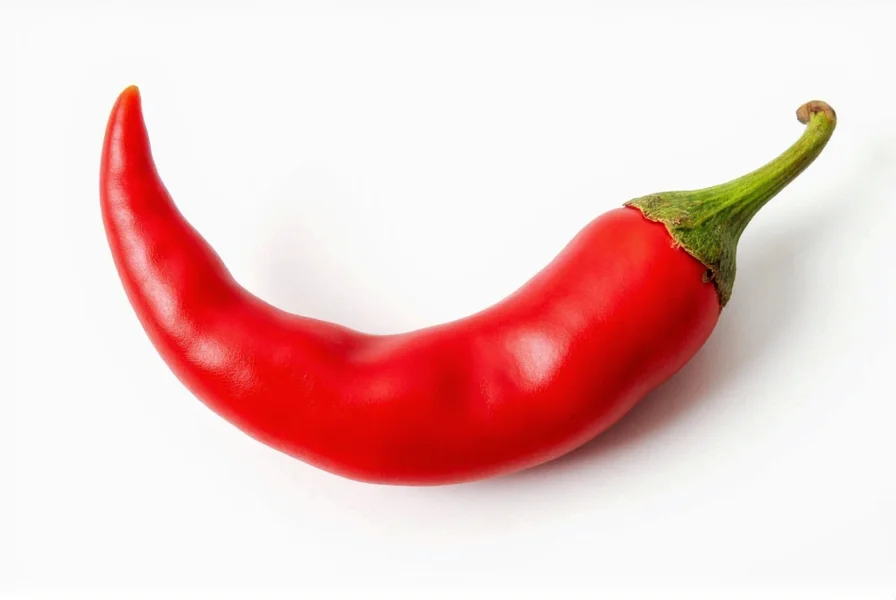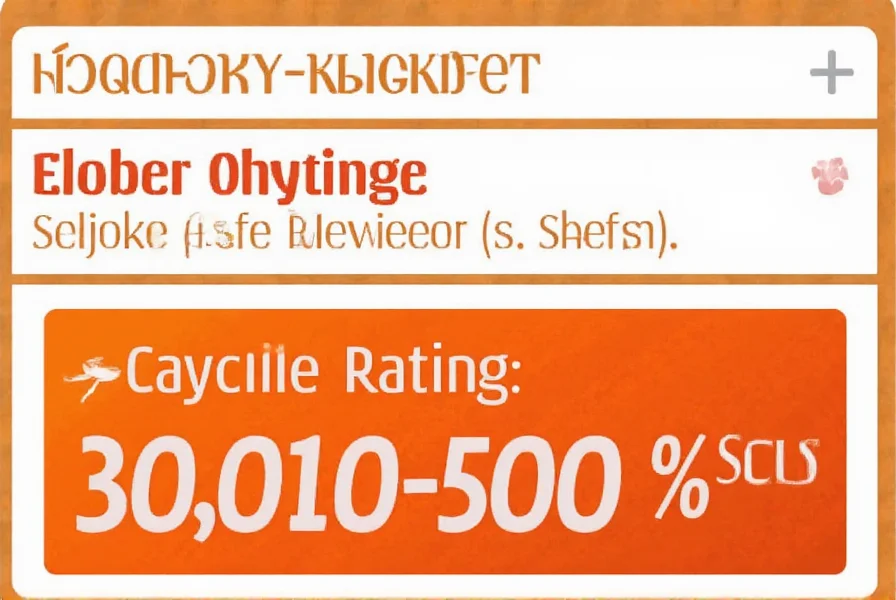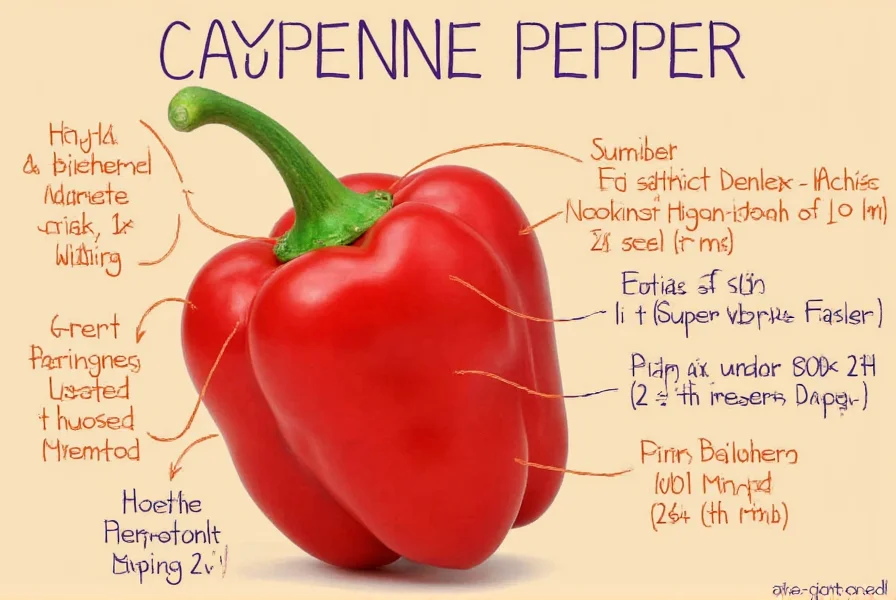Understanding cayenne chili pepper scoville ratings helps cooks and spice enthusiasts gauge heat intensity for culinary applications. The Scoville scale, developed by pharmacist Wilbur Scoville in 1912, remains the standard measurement for chili pepper heat worldwide. While cayenne's position between 30,000-50,000 SHU might seem straightforward, several factors influence its actual heat experience.
What the Scoville Scale Measures
The Scoville Organoleptic Test originally measured heat through human taste panels diluting pepper extract until the burn became undetectable. Modern laboratories now use high-performance liquid chromatography (HPLC) to precisely measure capsaicinoid concentration, then convert these measurements to Scoville units. This scientific approach provides more consistent cayenne chili pepper scoville heat measurements than the subjective original method.
Cayenne Pepper in Context: Scoville Scale Comparison
| Pepper Variety | Scoville Heat Units (SHU) | Relative Heat Level |
|---|---|---|
| Bell Pepper | 0 SHU | Mild |
| Jalapeño | 2,500-8,000 SHU | Mild-Medium |
| Cayenne | 30,000-50,000 SHU | Medium-Hot |
| Thai Bird's Eye | 50,000-100,000 SHU | Hot |
| Habanero | 100,000-350,000 SHU | Very Hot |
| Carolina Reaper | 1,400,000-2,200,000 SHU | Extreme |
Factors Affecting Cayenne's Actual Heat Experience
Several variables influence the perceived heat of cayenne chili pepper scoville measurements:
- Growing conditions: Soil composition, climate, and water stress significantly impact capsaicin production
- Pepper maturity: Fully ripe red cayenne peppers typically register higher on the scoville scale than green immature ones
- Plant variety: Different cayenne cultivars exist with varying heat profiles
- Preparation method: Drying concentrates capsaicin, making powdered cayenne often hotter than fresh peppers

Practical Implications for Cooking
Knowing the cayenne chili pepper scoville range helps chefs make informed decisions in the kitchen. At 30,000-50,000 SHU, cayenne delivers noticeable heat without overwhelming other flavors, making it versatile for:
- Adding subtle warmth to sauces and soups
- Creating balanced spice blends where heat complements rather than dominates
- Providing consistent heat in commercial food production
- Offering a middle-ground option between mild jalapeños and extremely hot habaneros
Chefs working with cayenne should remember that heat distribution varies within the pepper. The placenta (white ribs) contains the highest concentration of capsaicin, while the flesh has less. Removing seeds and membranes reduces the effective scoville heat when preparing fresh cayenne.
Safety Considerations with Cayenne's Heat Level
Handling cayenne requires caution due to its significant scoville heat units. Capsaicin oils can transfer to sensitive areas like eyes and cause discomfort. Professional chefs recommend:
- Wearing gloves when handling fresh or powdered cayenne
- Avoiding touching face during preparation
- Using dairy products (milk, yogurt) to counteract accidental exposure, as capsaicin is fat-soluble
- Starting with small amounts when cooking, as heat intensifies during cooking
Understanding Variability in Cayenne Scoville Measurements
When researching cayenne chili pepper scoville ratings, you may encounter slightly different ranges. This variation occurs because:
- Individual peppers from the same plant can differ in heat
- Testing methods yield slightly different results
- Commercial cayenne powder often blends peppers from multiple sources
- Environmental factors affect capsaicin production
Reputable sources consistently place cayenne between 30,000-50,000 SHU, distinguishing it from milder paprika (500-1,000 SHU) and hotter chilies like the Thai bird's eye (50,000-100,000 SHU).

Common Applications Based on Heat Profile
Cayenne's specific scoville heat range makes it ideal for applications requiring noticeable but manageable heat:
- Cajun and Creole cuisine: Provides signature heat without overwhelming complex spice blends
- Commercial hot sauces: Offers consistent heat level for mass production
- Health supplements: Delivers therapeutic capsaicin doses in controlled amounts
- Meat rubs: Penetrates proteins effectively without excessive burn
Unlike extremely hot peppers that require careful handling, cayenne's position on the scoville scale allows for more flexible culinary use while still delivering distinctive heat.
What is the exact Scoville rating for cayenne pepper powder?
Cayenne pepper powder typically measures between 30,000 and 50,000 Scoville Heat Units (SHU). The drying process concentrates capsaicin, often making powdered cayenne slightly hotter than fresh peppers, which may range from 30,000-40,000 SHU. Commercial blends can vary based on the specific peppers used.
How does cayenne compare to other common chili peppers on the Scoville scale?
Cayenne (30,000-50,000 SHU) is significantly hotter than jalapeños (2,500-8,000 SHU) but milder than habaneros (100,000-350,000 SHU). It's approximately 6-20 times hotter than jalapeños and about 1/3 to 1/7 the heat of a habanero. Thai bird's eye chilies (50,000-100,000 SHU) start where cayenne's maximum range ends.
Why does cayenne pepper's Scoville rating vary so much?
Several factors cause variation in cayenne chili pepper scoville measurements: growing conditions (soil, climate, water stress), maturity level at harvest, specific cultivar, and testing methodology. Even peppers from the same plant can show significant heat differences, which is why the Scoville rating appears as a range rather than a single number.
Can I substitute cayenne for other peppers based on Scoville ratings?
Yes, understanding scoville heat units allows for informed substitutions. For example, 1/4 teaspoon of cayenne (30,000-50,000 SHU) roughly equals 1-2 fresh jalapeños (2,500-8,000 SHU). When substituting, start with less than you think you need, as heat perception varies among individuals and intensifies during cooking.
Does the Scoville rating affect cayenne's flavor profile?
While the Scoville rating primarily measures heat, it indirectly relates to flavor. Higher heat cayenne varieties often develop more complex flavor notes as capsaicin production correlates with other flavor compounds. Most cayenne peppers offer a bright, slightly fruity flavor beneath the heat, distinguishing them from both milder sweet peppers and extremely hot varieties that can taste predominantly of heat.











 浙公网安备
33010002000092号
浙公网安备
33010002000092号 浙B2-20120091-4
浙B2-20120091-4